Rain poured down mercilessly, turning our path into a slippery mud field. Even with a rain jacket and an umbrella, I was soaked. I could hear the people behind me slipping once, twice, three times. Despite my best efforts to tread carefully in the absolute darkness of the forest using my phone light, one misstep had me on the ground. Mud seeped into my shoes and smeared my clothes.
But no one in the group ever thought about turning back or complained about the rain. This was a quest. And any discomfort was worth it for the unusual treasure at the end of our path: the neon green light of bioluminescent mushrooms.
We were on this adventure as part of Costa Rica’s new bet on adventure ecotourism — a fungi trail that seeks to introduce people to the wonderful world of mushroom hunting.
Clearing the Path for a Fungi Trail
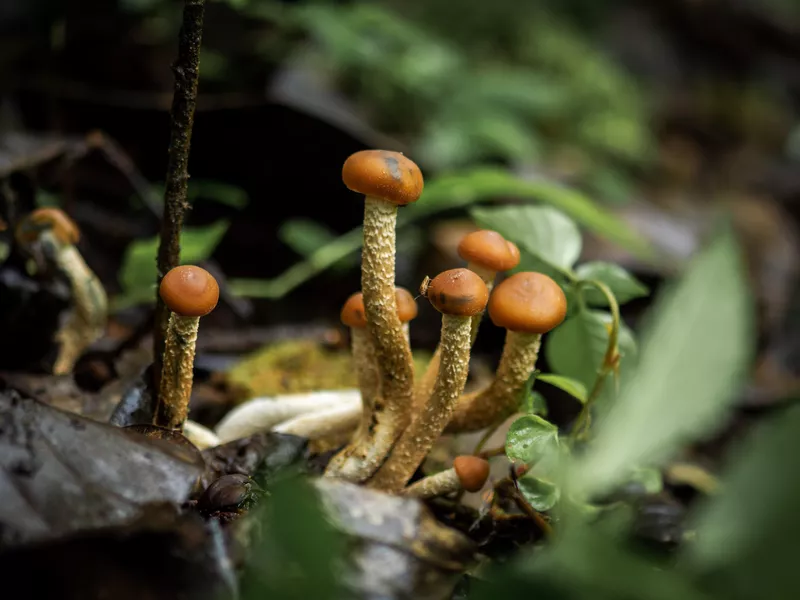
Iva Alvarado
The Fungi Trail came about in the same way paths in nature are formed: by the serendipitous encounter of various forces. The first of these colliding forces is Funga Conservation, a group founded by Luis Francisco Ledezma and Andrea Orellana as an antidote to what they called in a press release Costa Rica’s “mycophobic” (adverse to fungi) culture.
The second force is Oropopo Experiences, a small tour company specializing in hyperlocal and sustainable experiences. Through a common contact, the two paired to make a “trail” that’s less of an actual trail and more a series of fungi-collecting events around the country open to curious newbies and serious mycophiles.
The result is a one-of-a-kind nature path that fits perfectly with Costa Rica’s reputation for preserving its nature and making it easy for anyone to enjoy its wonders.
Citizen Science at Its Best
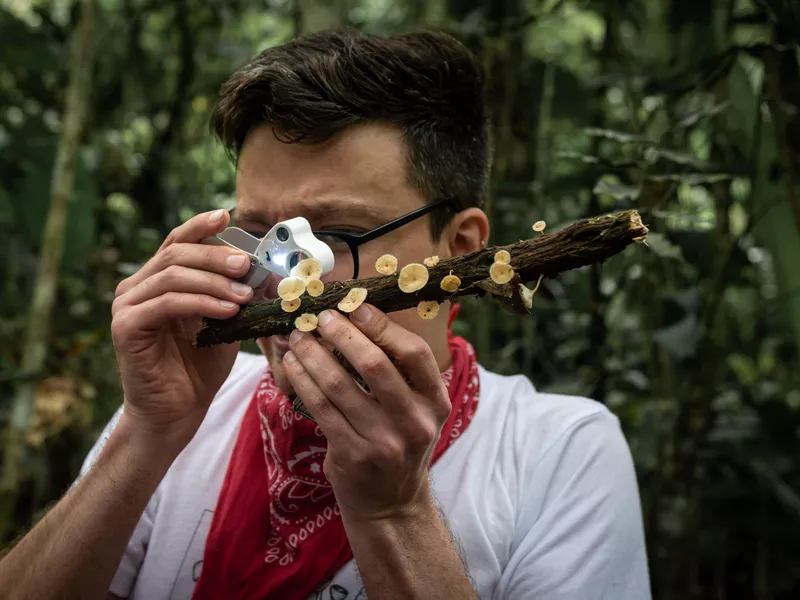
Iva Alvarado
But this isn’t just an indulgent trail where you forest bathe while ogling over cool-looking mushrooms. Tours also support scientific research. Orellana, one of the founders of Funga Conservation, was the mycologist that accompanied us on our expedition. She states that fungi have been widely studied in Costa Rica but usually by foreign scientists. Historically, this has meant that knowledge isn’t shared back with the community or remains inaccessible to most people in the country.
Partnering with the National University of Costa Rica, the Fungi Trail serves as a way to collect specimens to be studied. Orellana and other mycologists take samples found on the trail back to the university’s laboratory, where they identify and classify them.
A team of researchers led by mycologist Melisa Maradones claims that there are currently 6,500 fungi species in Costa Rica (for comparison, Canada has 10,163 species despite being 195 times larger). But they estimate there are 159,000 species in the country, so only about 4 percent have been adequately studied. And anyone on the tour has the chance to make a discovery.
Of course, only trained experts collect samples during the tour. But, after foraging, a mycology table is set up from which everyone can look at each specimen in detail. Amateur enthusiasts pull out their impressive magnifying glasses to look closely at each magnificent fungi.
The Rise of Mycology Tourism
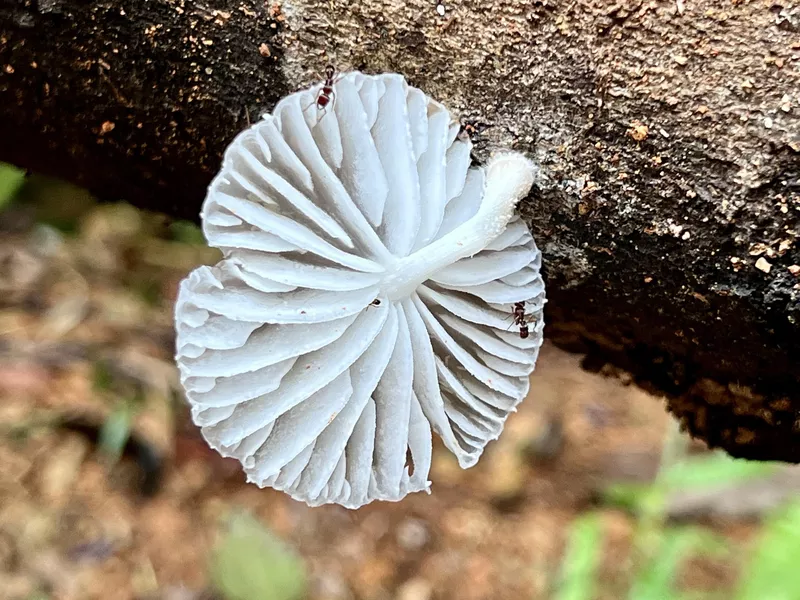
Mariana Zapata
But why would people even want to join a tour to see fungi?
That was my first question when I learned about this experience. I knew nothing about the kingdom except that some mushrooms taste good, and some fungi are the bane of my existence (I’m looking at you, mold).
Still, I was intrigued by the idea of doing something outside the tried and beaten ol’ tourist path in Costa Rica. I discovered that the fungi kingdom is much more interesting than I imagined.
The curious beings are the quiet heroes we need but don’t deserve. They break down matter that’s difficult for other species to digest (such as rigid parts of wood), help soil retain moisture, provide medicine (like the life-saving penicillin) and even have the potential to clean up oil spills. Plus, if you like beer, bread and cheese, you can thank fungi for them. (Yes, yeast is a fungus!)
To get to know fungi is to start falling in love with them.
Seeing the Forest Through New Eyes
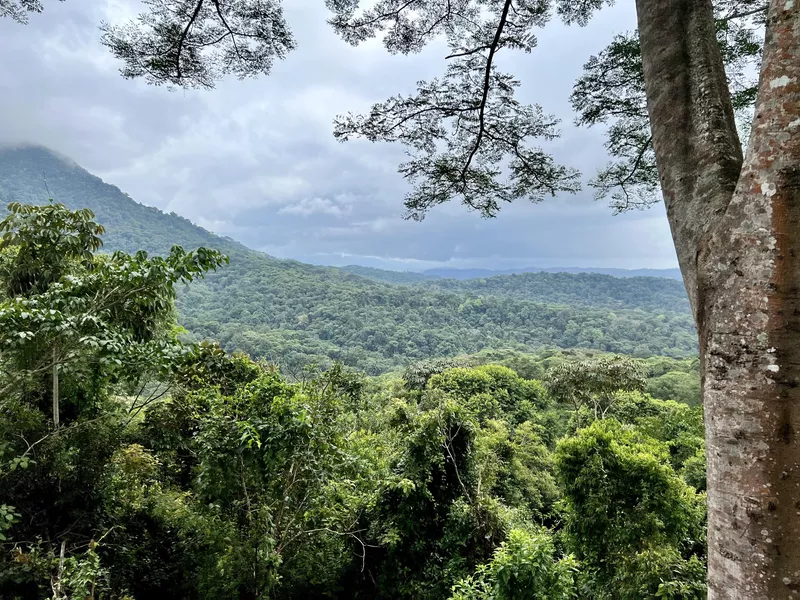
Mariana Zapata
Besides awakening a new sense of awe for these unique beings, the mycology tour opened my eyes to the forest. Our route took us to La Cangreja National Park, one of the least visited preserves in Costa Rica and a place I probably would have never visited were it not for the Fungi Trail.
As an amateur but enthusiastic hiker, I thought that I appreciated my time in the woods. But neglecting the macro — the vast sea of green, the undulating paths of dirt and rock, and the intense sound of the wind rustling leaves in the canopies — revealed an entire world that had always been there but that I never had truly noticed.
I realized that fungi are everywhere. Wherever we looked, there was a diversity of species. Some were black and small. Others, bright-orange and medium-sized. There were white mushrooms with deep slits that ants used as paths, large mushrooms coming out from the sides of trees like stepping stones to the cupolas, and fuzzy fungi overtaking and breaking down leaves, bugs and even other fungi.
Suddenly, the forest became small, and all the things that usually go unnoticed became visible: the minuscule movements of bugs, a flower starting to peek from the ground, roots breaking down stubborn rocks. The micro, it turns out, is just as remarkable as the macro.
We covered only a short distance. Mycology is a slow sport that requires patience, but we saw the forest in more detail than if we had breezed through it toward the end of a trail. All in all, we picked up 30 samples for Orellana to take back to the lab and saw many more species that we left happily in their habitat.
Glowing in the Dark

Mariana Zapata
That brings us to the end of the first day, with us slipping in mud but hellbent on continuing toward the river. There, we’d find the pot at the end of the glowing rainbow.
I’d seen aquatic bioluminescence in places like Puerto Rico’s magical bays, but I had never seen it on land. The night tour started right in our accommodation, Villas Matastal, an eco-friendly project owned by a local family. Besides delicious homemade food and rustic cabins, the lodge boasts a large expanse of forest.
On a dark night, owner Javier Zúniga Román got lost in his woods and stumbled onto the greenish-blue glimmer of glowing mushrooms. Now, during the rainy season, guests can go on the hunt for this experience.
Soaked to the bone, uncomfortable and sore from falling on our butts, we braved through the slippery road in the dark until the river signaled our stop. We then turned off our lights and stood in silence for two minutes, admiring the iridescence of these tiny beings that somehow illuminated the forest.
Suddenly, we all forgot about the rain. We were no longer cold. And the mud became a fun slide that brought us to this slice of paradise. Although the way back up was challenging, we were all so blissfully fulfilled by the experience that we might as well have floated up on a cloud.
It’s Not All About the Fungi — but It Is About the Fun
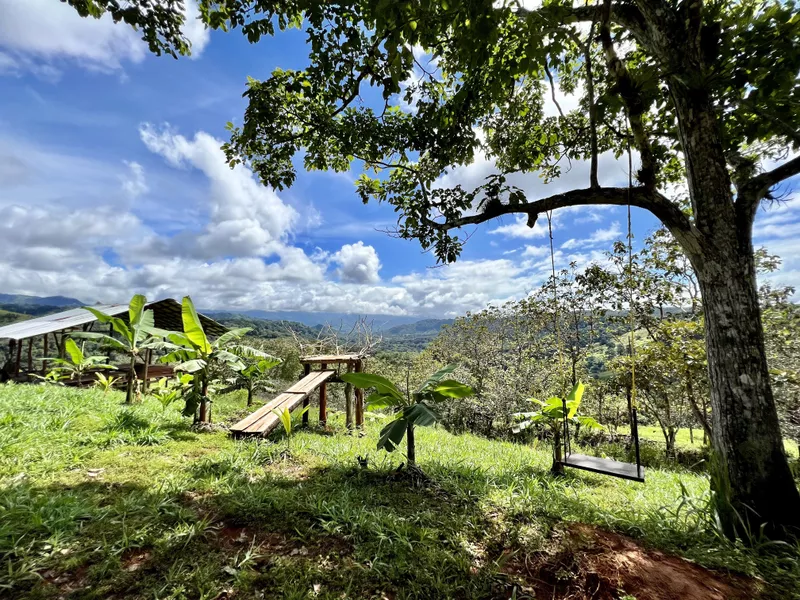
Mariana Zapata
Yes, the focus of a mycology tour is learning about fungi. But Oropopo knows people need a little variety to spice up their life. So, while fungi were present throughout, we also had other exciting experiences.
Zúniga Román led a short workshop on composting (mentioning how he used fermented fungi with molasses to make the process faster) before we set out to Villas Mastatal’s extensive property, which hides the imposing Twins Waterfalls.
After hiking down the hills — stopping on the way to identify and collect fungi — we arrived at a river that ran parallel to two powerful waterfalls. To our delightful surprise, one of them had a small hidden cave. Passing the intense downpour of the falls revealed walls of limestone that were cool to the touch. Inside the cave, the water became a soft curtain that filtered the outside world.
When the time came to leave, Marcelo, our guide and timekeeper, practically had to force us out of the water.
A Tour by Locals for Locals
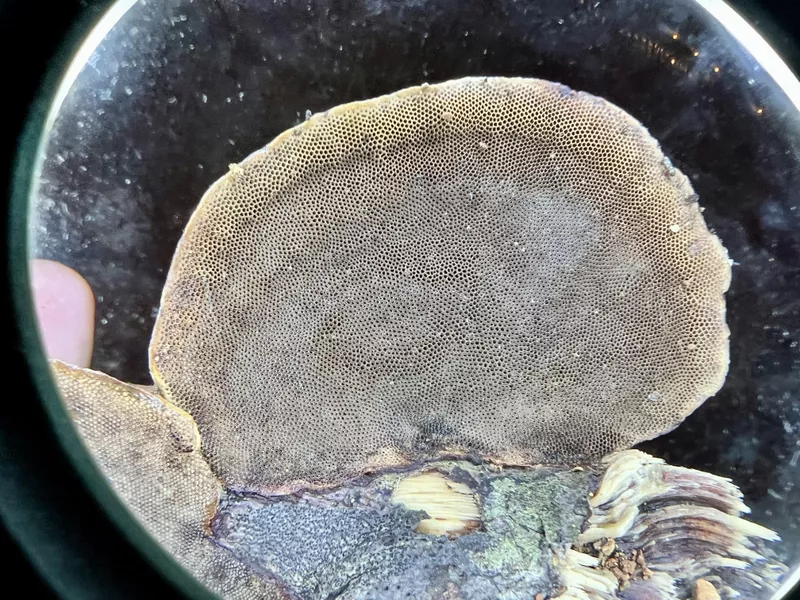
Mariana Zapata
Besides exposing people to this fascinating kingdom, the best thing about the tour is that it’s made mainly for Costa Ricans.
My friend and I were the only foreigners participating in the La Cangreja stop. The rest of the group was made up of proud Ticos getting to know their country in a different light. Finding experiences like this can be difficult for travelers, especially on a tour.
After two months in Costa Rica doing everything from horseback riding to (a failed attempt at) ATV driving, this Fungi Trail tour was one of the most fun, rewarding and surprising things I did in the country.
An Everchanging Trail
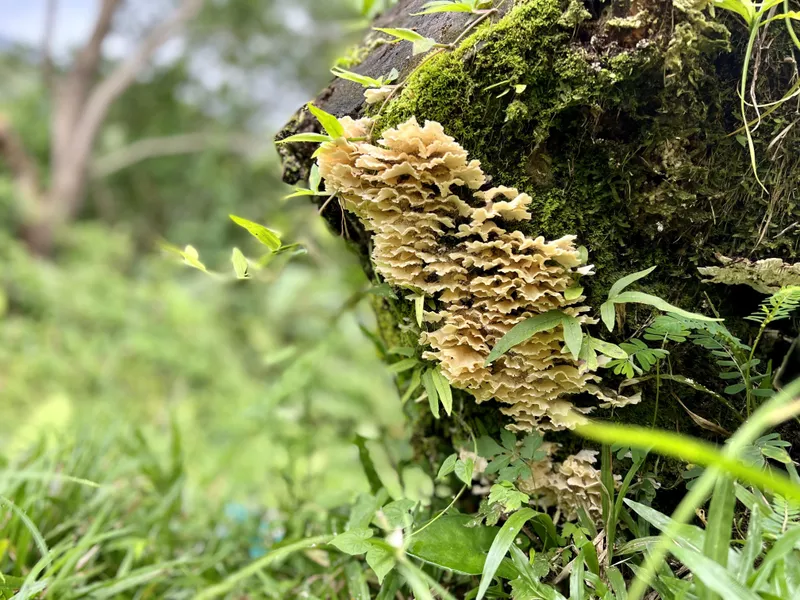
Mariana Zapata
As I’ve explained, the Fungi Trail is not really a trail. Instead, it’s a collection of experiences held during the rainy season.
The trail was launched in 2022, and its stops will vary from season to season. But you can expect tours in some of Costa Rica’s best destinations. The inaugural trail, for instance, had another bioluminescent experience in the popular Monteverde cloud forest. Participants learned about edible fungi at Cerro las Vueltas or searched for fungi that overtake and control insects, turning them into real-life zombies.
An expert mycologist is present in all experiences, guiding the group through the mysterious world of fungi, answering questions and sharing their excitement. You can book a tour by contacting Oroporo Experiences. Since every stop varies in length and complexity, prices fluctuate, but our La Cangreja tour was $165 for two days and included transportation, three meals and lodging.
Why Did the Mushroom Have So Many Friends?
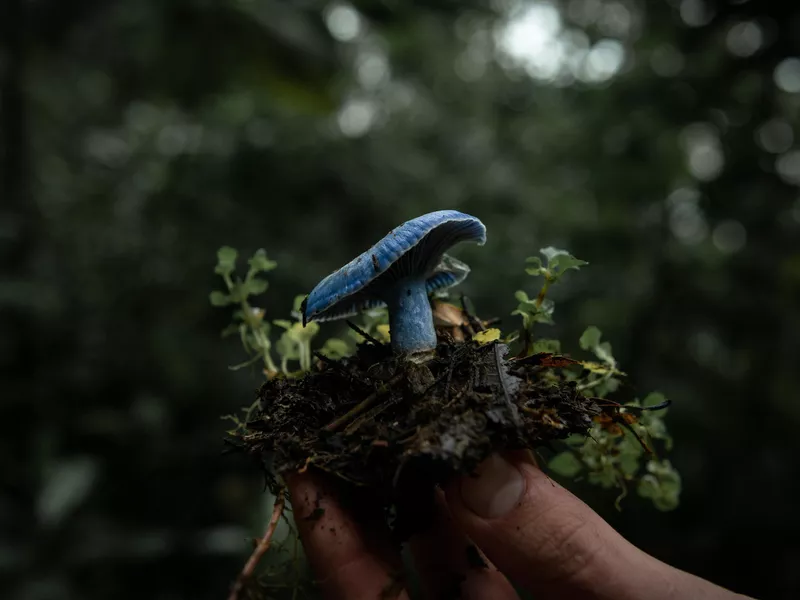
Iva Alvarado
Because he’s a fun-gi!
And also because he is endlessly fascinating. If you’re already into mycology, I don’t need to convince you to do this experience.
But if, as I was, you’re hesitant about spending your precious travel time chasing something you can find in week-old bread, heed the call of curiosity. You’ll be surprised by how much you enjoy looking at these alien-like beings that quietly rule the world.